Looking at Potential Improvements Listed in WTA’s 2024-2029 Transit Development Plan
These are the local transit service improvements most likely to materialize in the coming years.
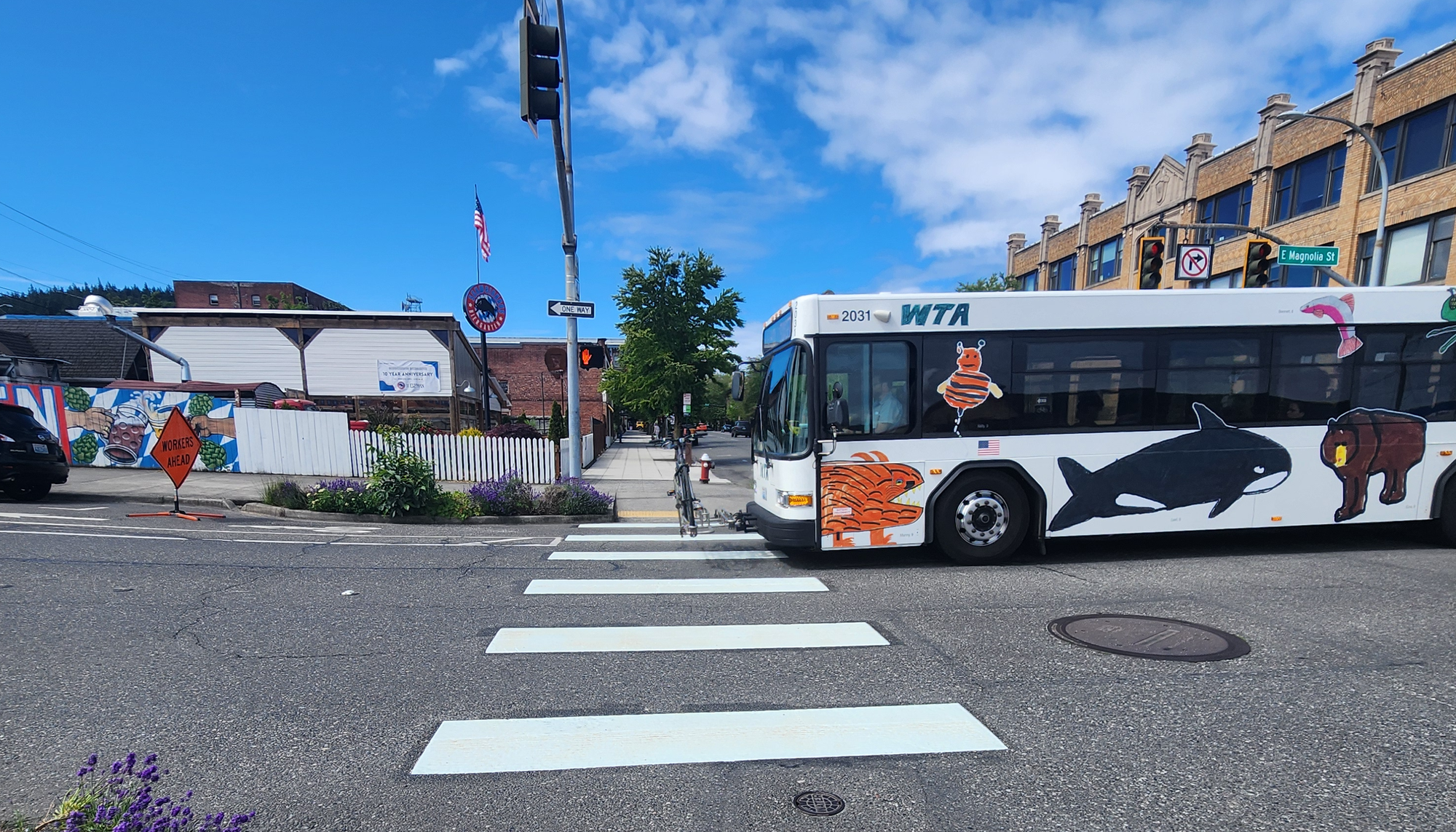
BhamByBus has been reviewing potential service improvements identified in the Whatcom Transit Authority’s recently released 2024-2029 Transit Development Plan (.pdf), which details standards used to evaluate route performance, route design, and other aspects of bus service. Public comments can be submitted via email until 3 p.m. on Wednesday or shared in person during a WTA Board of Directors public hearing on Thursday at 8 a.m. There’s clearly a lot of thoughtful analysis throughout WTA’s 46-page plan, so BhamByBus is mostly going to focus on 8 operations-related bullet points listed in Figure 12 on Page 40, which outlines potential service improvements that are in the planning stages for 2025 and beyond.
Before going through those 8 bullet points, it’s important to first underscore just how tenuous the agency’s potential planning improvements are if voters in November repeal Washington’s Climate Commitment Act (CCA) through the current statewide ballot measure that would scrap the law signed by Gov. Jay Inslee in 2021.
As WTA’s Transit Development Plan notes in a disclaimer on Page 23 about the WTA’s CCA-funded Transit Access Fund (TAF) and other local projects funded through the CCA:
CCA funds will also be used to support key initiatives at WTA, including development of a new downtown transit center, a rapid transit project, and to reduce WTA’s carbon footprint through a zero-emission fleet transition and other measures.
The potential repeal of CCA funding in November will have a significant impact on the projects listed …
Let’s go through the service improvements that are the most likely to materialize in the coming years, plus some observations from BhamByBus (which we’ll adapt and submit as a public comment).
Increase Frequency on Route 50 (Lummi Nation)
WTA planners have identified potential service upgrades that would boost frequency along Route 50 between Downtown Bellingham and the Lummi Nation, which currently sees 9 roundtrip buses on weekdays (approximately every 90 minutes), 7 roundtrips on Saturdays, and 6 roundtrips on Sunday. As planners look to boost housing density along high-frequency transit corridors like the Green GO Line, additional bus service on Route 50 could help ease crowded conditions on some Route 232 buses, which serve the entire Green GO Line corridor between Bellingham Station and Cordata Station via Northwest Avenue. It’s also a demonstration of the WTA’s blended service model, where less-frequent routes serving rural areas, tribal communities, and smaller cities in Whatcom County help bolster urban bus service along priority corridors in Bellingham.
Realign and Increase Service on Route 4
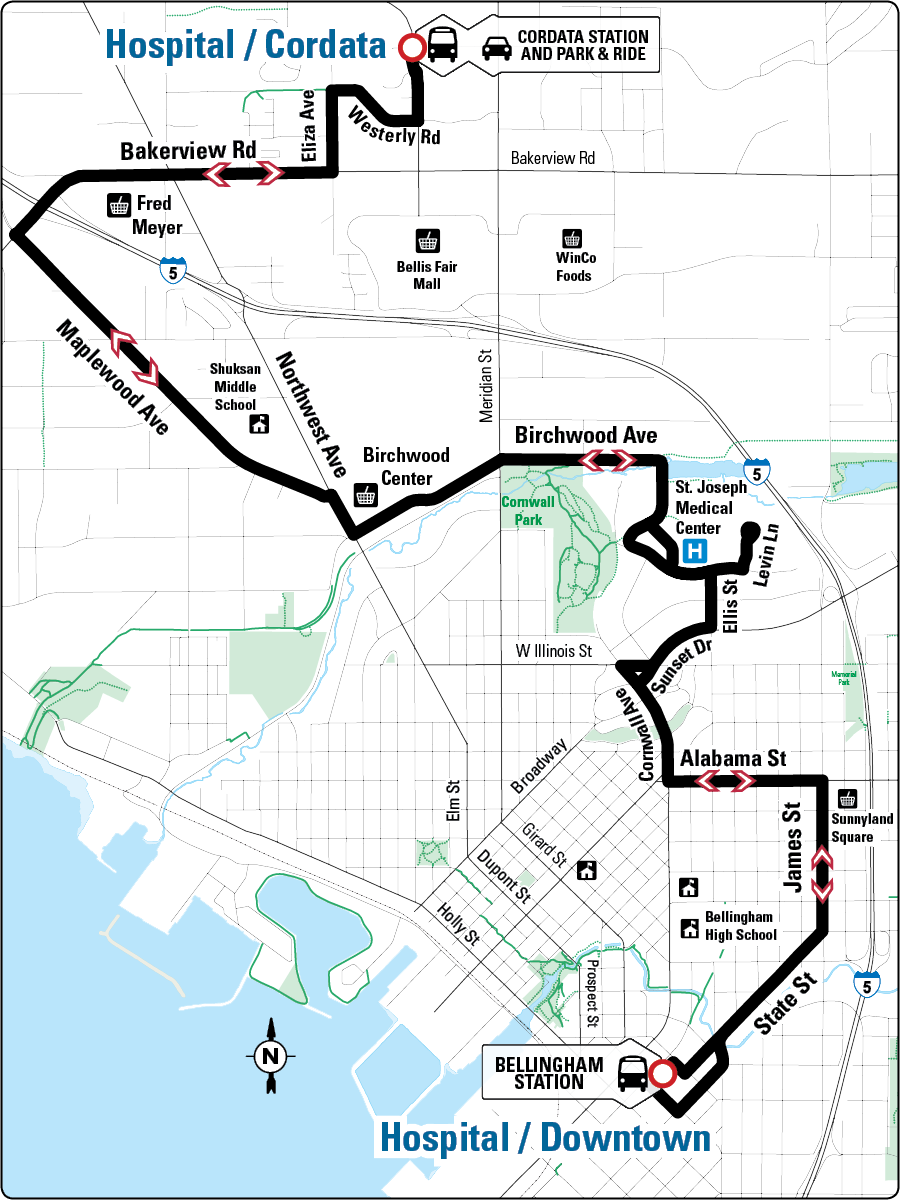
When BhamByBus moved to Bellingham, one of the eyebrow-raising discoveries about current local transit service was that PeaceHealth St. Joseph Medical Center, the only hospital in the City of Bellingham and Whatcom County, is not well served by transit. WTA’s Route 4 between Downtown Bellingham and Cordata Station via the hospital campus only sees bus service once an hour Mondays-Saturdays and lacks any Sunday bus service.
One Sunday last fall, BhamByBus overheard a very kind WTA bus operator give directions to a wheelchair-bound passenger who was trying to reach St. Joseph’s Medical Center to visit a friend who was hospitalized. The less-than-ideal alternative with Route 4’s lack of Sunday service: Take a Route 15 bus to Meridian Street and then trek nearly 1 mile through Cornwall Park. While it wasn’t raining that day, I was trying to envision someone attempting that unfortunate Sunday workaround to access the hospital during an atmospheric river.
In transit planning, medical centers and hospitals are priorities for service, not only because of the health care access they provide but also because they are major ridership generators due to their high concentration of employment. PeaceHealth St. Joseph Medical Center may be the largest employer in Whatcom County, but as BhamByBus has previously noted, many local veterinarians enjoy more frequent transit service than our regional hospital.
Route 4’s struggles go beyond its current once-hourly service levels. During afternoons, northbound buses can get bogged down in freeway-bound backups while trying to advance through the succession of traffic signals along N. State Street at Meador Avenue, Ohio Street, and Iowa Street. The medical center’s location east of Cornwall Park also requires a handful of turns and a deviation to serve the entirety of the St. Joseph’s campus.
In WTA’s 2024-2029 Transit Development Plan, Goal No. 2 is: “Serve as a leader and a key partner in improving the equity and efficiency of local transportation.” One of the identified strategies to pursue that goal is to “work with large employers to identify their needs and tailor programs and services to increase their use of walking, biking, and transit.” In the Transit Development Plan, the agency notes that it is “initiating work” with PeaceHealth in 2024. That’s good news and gives some hope that WTA, working with PeaceHealth, can figure out a way to boost transit connectivity to the medical center.
Although planners have prioritized a Route 4 realignment in the 2024-2029 Transit Development Plan as a potential operations improvement, WTA planners don’t detail what that could look like.
While simply boosting service levels on Route 4 seems like low-hanging fruit, a more substantial realignment of service to and from the hospital may be in order, perhaps decoupling the Downtown-Hospital portion of route from the Hospital-Cordata portion of the route along Birchwood Avenue, Maplewood Avenue, and Bakerview Road.
BhamByBus likes the idea of pairing buses serving St. Joseph Medical Center and James Street through the Sunnyland neighborhood with another WTA route connecting Downtown Bellingham to the Southside, like Route 1 (Downtown to Fairhaven), or one of the Blue GO Line bus routes serving Western Washington University. Bellinghamsters would certainly benefit from more north-south crosstown bus service — like the through-routed Route 14 (Downtown to Fairhaven via WWU) and Route 15 (Downtown to Cordata via Meridian Street) — that avoids a forced transfer downtown at Bellingham Station. But doing that would likely upturn WTA’s careful bus scheduling at Bellingham Station, where routes have a layover to accommodate passengers making transfers.
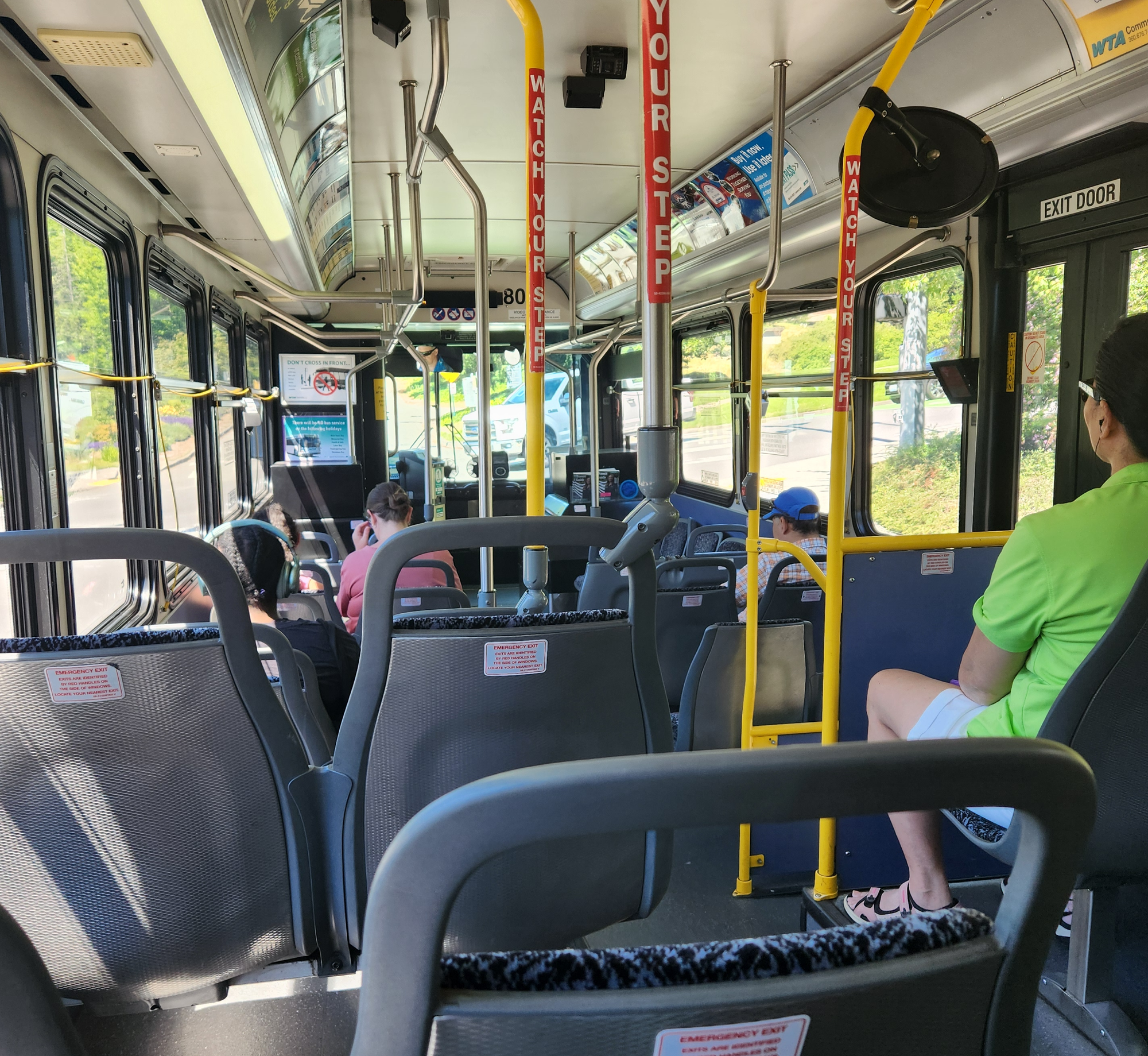
Continue Service to Maplewood Avenue
Any potential realignment of Route 4 would mean finding a way to maintain transit service on the western portion of the route across town along Maplewood Avenue in the Birchwood neighborhood, a socio-economically diverse area and notable grocery desert that’s home to numerous households who don’t have immediate access to a car. While the possibility of boosted transit service along Route 50 would benefit parts of Birchwood via the Green GO Line on Northwest Avenue, WTA would need to think through potential ways to maintain bus service along Maplewood Avenue west of Northwest Avenue. (Given other bus service along Northwest Avenue and Meridian Street, maintaining service along the portion of Route 4 along Birchwood Avenue east of Northwest Avenue may be less important if WTA finds a better way to serve the hospital via any potential Route 4 transit realignment.)
Add Service to the King Mountain Area
This past spring, on a late afternoon Amtrak Cascades bus trip from Seattle to Bellingham, BhamByBus was approached by a fellow traveler who was unfamiliar with Bellingham. They inquired about how to get to a particular address in an area of the city near the urban growth boundary off James Street & E. Kellogg Road, well north and east of existing transit service.
The best advice BhamByBus could give was this after looking up the address: Take a Cordata-bound Route 331 out of Bellingham Station via the Gold GO Line to James Street & Telegraph Road, then walk about 15 minutes north along James Street — where sidewalks are not always present nor connected — to the address in the King Mountain area.
This neighborhood, annexed by the City of Bellingham in 2009, has seen major housing growth in recent years but currently has no immediate transit access. In 2017, WTA planners rerouted Route 311 off Interstate 5 between Sunset Square and Bellis Fair Mall to the Gold GO Line’s current pathway via Telegraph Road to serve numerous new housing units that have been built. But the current route is too far away to provide the King Mountain area with meaningful transit access. Given the growth in this part of Bellingham, it makes sense to find a way to serve the neighborhood, even if it’s only once-hourly service.
Add Service to the Waterfront
Last week, BhamByBus ventured to the Squalicum Harbor transit desert to attend a Bellingham City Club event at the Bellingham Yacht Club. To do that without a car or bike, that necessitates either walking approximately 25 minutes from WTA bus routes in the Lettered Streets (Route 50 and Route 232, which are part of the frequent Green GO Line) or Old Town (Route 3 on W. Holly Street, which is once-hourly Monday-Saturday), or making the long trek from Downtown Bellingham on foot (about 35-40 minutes to Bellingham Station). The walk along the Roeder Avenue speedway is not necessarily pleasant, especially navigating the BNSF railroad crossing at Roeder Avenue & F Street.
It’s promising to see WTA eye waterfront transit service as a potential improvement in the agency’s 2024-2029 Transit Development Plan. Serving the waterfront is challenging due to two physical barriers: The BNSF railroad tracks that parallel Roeder Avenue and the bluffs between the railroad tracks and the neighborhoods along W. Holly Street and Eldridge Avenue. West of the intersection of Roeder Avenue & F Street, there are no street connections between the waterfront area and the neighborhoods on the bluffs, making Roeder Avenue, physically cut off from much of Bellingham, the only way to access Squalicum Harbor.
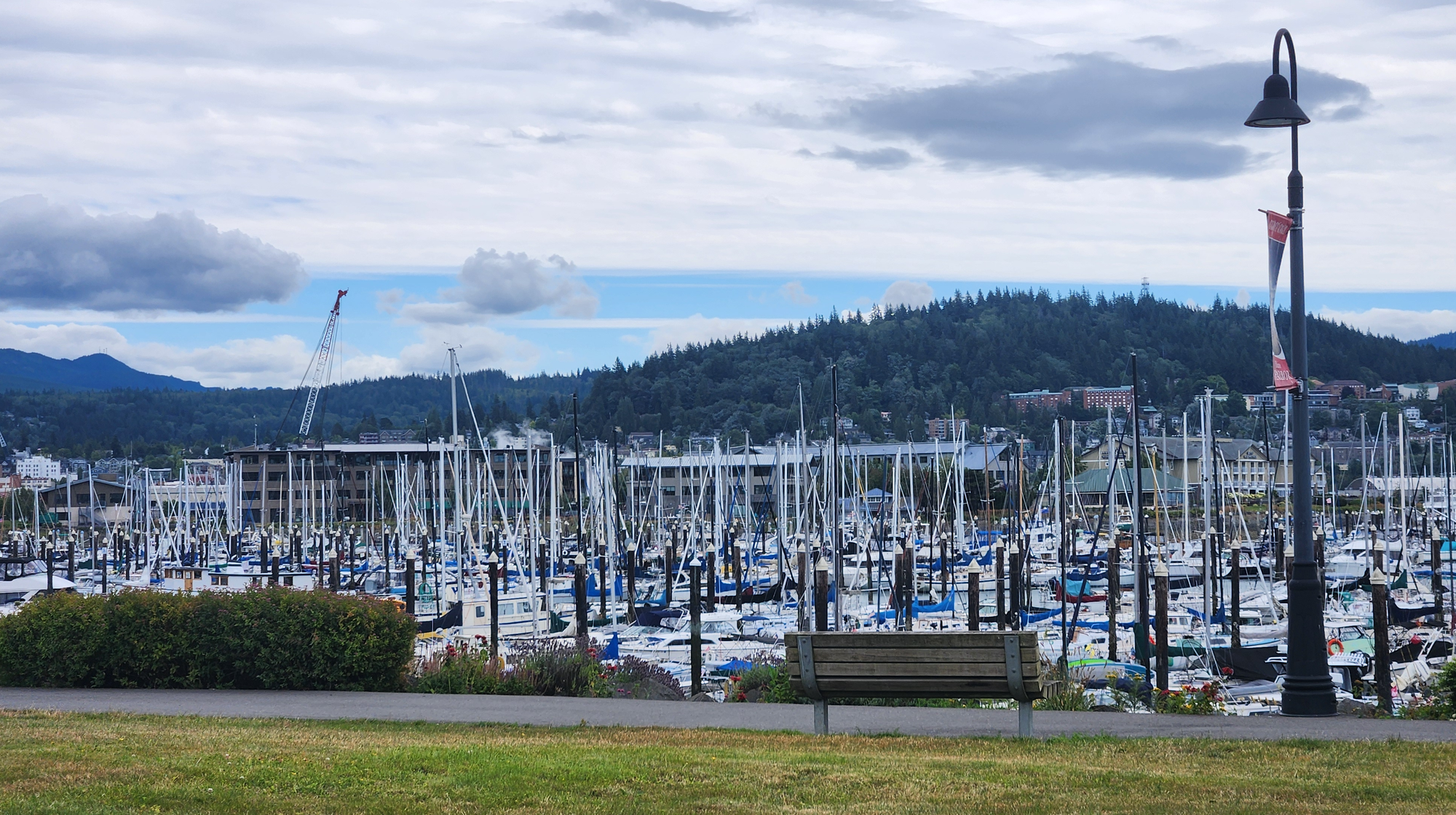
Some ideas and observations from BhamByBus for potential waterfront transit service improvements:
- In transit planning, it’s not desirable for a bus route to cross active railroad tracks at-grade due to train delays, which can throw buses off schedule. So to serve Squalicum Harbor from downtown, the logical route uses the Chestnut Street viaduct that crosses over the BNSF rail tracks near Kulshan’s Trackside Beer Garden and the Granary Building, and then west along Roeder Avenue.
- Running a short shuttle route between Downtown Bellingham and Squalicum Harbor via Roeder Avenue may have limited utility but connecting it to another route that serves Bellingham Station, perhaps through-routed with a WWU-serving Blue GO Line route or with Route 1 to and from Fairhaven, could make it more useful. The latter idea would put all of Bellingham’s waterfront destinations — Marine Park, the Bellingham Cruise Terminal, the Fairhaven neighborhood, Taylor Dock, Boulevard Park, Downtown Bellingham, Trackside, Waypoint Park, Old Town, Marine Life Center, Squalicum Harbor, and Zuanich Point Park — all on the same bus route, making it more appealing for visitors and locals alike to use transit to access Bellingham’s waterfront instead of driving.
Efficiency Improvements on the Blue Go Line and Connecting Routes Through Western Washington University
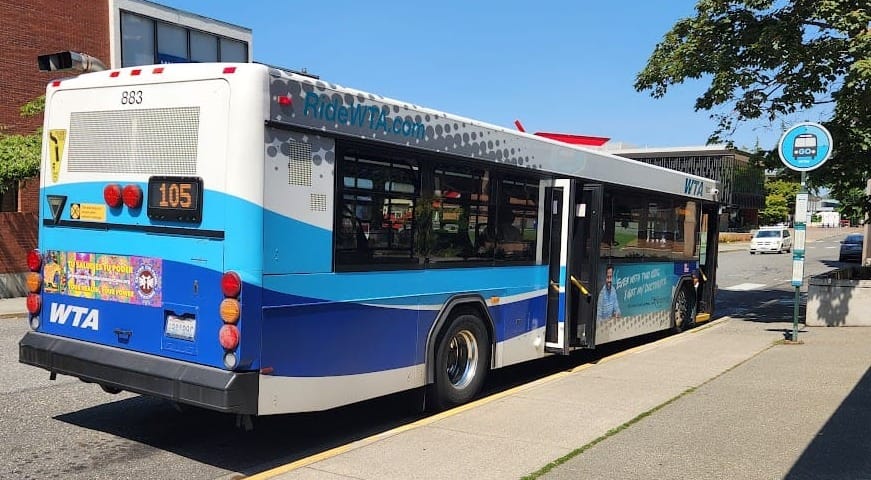
As WTA planners pursue longer-term work studying the possibility of developing Bellingham’s first rapid-transit corridor — an effort that could eventually result in connecting the existing Blue and Green GO Line corridors through Downtown Bellingham as an upgraded bus rapid transit line — in the 2024-2029 Transit Development Plan, the agency lists Blue GO Line “efficiency improvements” as a potential project that could take shape in the coming years. The efficiency improvements aren’t necessarily detailed, but their inclusion points to some of the challenges of moving buses through Western Washington University’s campus. From BhamByBus’s experience, Blue GO Line buses (Routes 14, 105, 107, 108, 190, 196, and 197) aren’t necessarily bogged down in traffic heading through campus. In fact, High Street is transit-only through much of Western’s campus. Buses are, however, slowed down during the fall, winter, and spring academic quarters by Western students who pack Blue GO Line buses. And the time it takes to board buses, plus paying fares or validating transit passes, can add up at many heavily used WTA stops, especially along High Street (at Viking Union and Haggard Hall) and Bill MacDonald Parkway (at the Wade King Recreation Center and Buchanan Towers).
There are limited tools at WTA’s disposal to speed up Blue GO Line buses. While the agency can’t accommodate longer 60-foot articulated buses due Bellingham’s numerous bus bays designed for smaller 40-foot buses and limited space at Bellingham Station, the agency could squeeze out some additional efficiencies, including evaluating the feasibility of a “pass free” zone around Western’s campus (as is noted on Page 22 of WTA’s Transit Development Plan) could allow all-door boarding and help reduce dwell time at bus stops. While those seconds saved may not sound like much, they can add up. Similar efforts to reduce bus dwell time in other cities have yielded meaningful time savings, so it’s something certainly worth further consideration in Bellingham.
Increase Frequency of the Gold GO Line
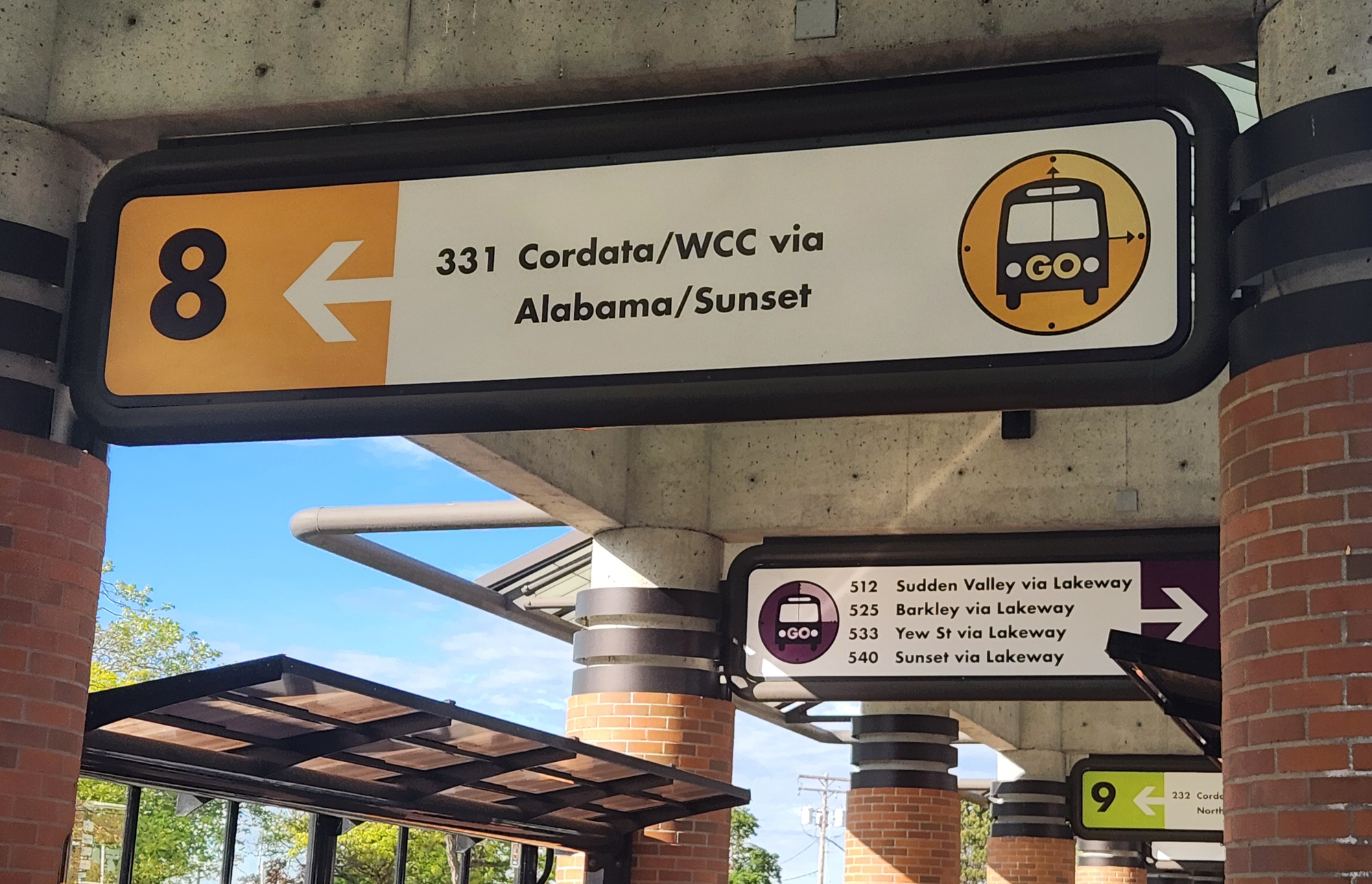
Route 331, which connects Bellingham Station and Cordata Station, forms the backbone of the Gold GO Line corridor along Cornwall Avenue, Alabama Street, Woburn Street, James Street, Telegraph Road, and Bellis Fair Parkway. Despite this frequent transit corridor’s numerous turns and indirect route, Route 331 connects many important local activity hubs, including Downtown Bellingham and Barkley Village (both of which are designated urban villages), the Sunset Square shopping center, and Bellis Fair Mall. As a result, Route 331 saw the highest ridership of any WTA route in 2023, as noted in a question during WTA’s Transit Trivia Night in June.
WTA planners have identified increasing frequency of Route 331 as a possibility in the 2024-2029 Transit Development Plan. Currently, Route 331 sees four bus trips per hour Monday-Saturdays for most of the day, with two bus trips per hour in the evenings, until approximately 10 p.m. On Sundays, Route 331 service is reduced to two bus trips per hour, with service wrapping up around 8 p.m. While WTA can’t make new buses and bus operators magically materialize out of thin air, increasing Gold GO Line bus frequency is a laudable goal, especially if it leads to additional service in the evenings and on Sundays.
Schedule Improvements
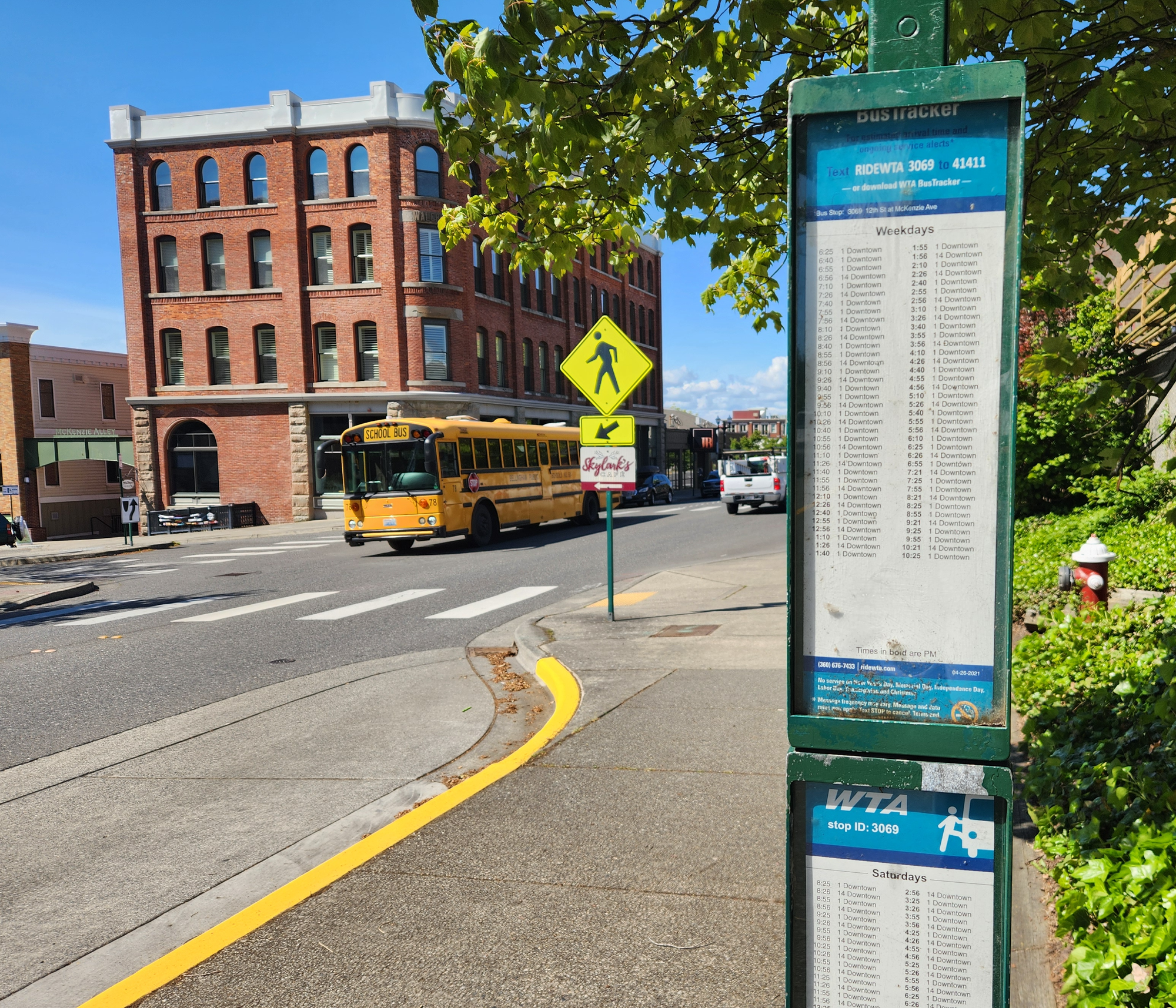
While the eighth bullet point in Figure 12 of WTA’s 2024-2029 Transit Development Plan notes “schedule improvements” that could be coming in the coming years, it doesn’t wade into granular specifics of what those could look like. But finding ways to adjust and optimize bus schedules in meaningful ways is certainly welcome, especially if that means facilitating better transfers between routes at key points or boosting service frequency on routes that could benefit from additional bus trips.
The plan doesn’t mention the possibility of extending WTA’s span of service later into the evenings, something that BhamByBus thinks could help some local restaurant and bar workers, especially those in Downtown Bellingham whose shifts end after the last buses depart Bellingham Station for the night. As WTA looks to improve “access to opportunity,” something the agency has pointed to as a factor when evaluating and delivering bus service, it shouldn’t overlook some limited later evening bus trips on key routes could prove beneficial and make it easier to get around Bellingham without a car.
- Have local and regional transit and transportation news to share? Email BhamByBus.
- Follow BhamByBus on Instagram.
